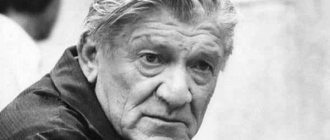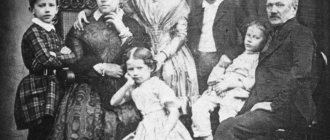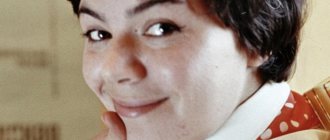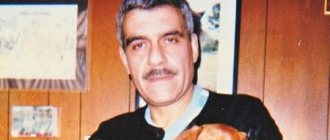Birth and family
In the Oryol province, not far from the city of Mtsensk, in the 19th century the Novoselki estate was located, where on December 5, 1820, in the house of the wealthy landowner Shenshin, a young woman Charlotte-Elizabeth Becker Fet gave birth to a boy, Afanasy.
Charlotte Elisabeth was a Lutheran, lived in Germany and was married to Johann Peter Karl Wilhelm Feth, assessor of the Darmstadt City Court. They married in 1818, and a girl, Caroline-Charlotte-Georgina-Ernestine, was born into the family. And in 1820, Charlotte-Elizabeth Becker Fet abandoned her little daughter and husband and left for Russia with Afanasy Neofitovich Shenshin, being seven months pregnant.
Afanasy Neofitovich was a retired captain. During a trip abroad, he fell in love with the Lutheran Charlotte Elizabeth and married her. But since the Orthodox wedding ceremony was not performed, this marriage was considered legal only in Germany, and in Russia it was declared invalid. In 1822, the woman converted to Orthodoxy, becoming known as Elizaveta Petrovna Fet, and they soon married the landowner Shenshin.
Childhood
The child born in 1820 was baptized in the Orthodox rite that same year and registered in his stepfather’s surname – Shenshin Afanasy Afanasievich.
When the boy was 14 years old, the Oryol provincial authorities discovered that Afanasy was registered under the surname Shenshin before his mother married her stepfather. In connection with this, the guy was deprived of his surname and noble title. This hurt the teenager so deeply, because from a rich heir he instantly turned into a nameless man, and all his life he then suffered because of his dual position.
From that time on, he bore the surname Fet, as the son of a foreigner unknown to him. Afanasy perceived this as a shame, and he had an obsession, which became decisive in his future life path - to return his lost surname.
Training and service
Until the age of 14, Afanasy was educated at home. Then he was assigned to the German boarding school Krommer in the Estonian city of Verro.
At the age of 17, his parents moved the guy to Moscow, where he began preparing for university at the boarding house of Pogodin (a famous historian, journalist, professor and writer at that time).
In 1838, Afanasy became a law student at the university. Then he decided to continue his studies in historical and philological (verbal), transferred and studied until 1844.
After graduating from university, Fet entered the army service; he needed this to regain his noble title. He ended up in one of the southern regiments, from there he was sent to the Uhlan Guards Regiment. And in 1854 he was transferred to the Baltic regiment (it was this period of service that he later described in his memoirs “My Memoirs”).
In 1858, Fet finished his service as a captain, like his stepfather, and settled in Moscow.
Years of study and trial
From the age of 14, the life of the future poet changed dramatically. His father took him first to Moscow, then to St. Petersburg, and then, on the advice of friends, sent him to study at a pedagogical institution of some Krümmer in the remote Livonian town of Verro. The fact is that back in 1835, the spiritual consistory decided to consider I. Fet as the boy’s father.
Shenshin had enemies who sought to use the presence of an illegitimate child to his detriment. He tried in this way to ensure the continued well-being of the family. From now on the boy was obliged to sign as Afanasy Afanasyevich Fet. His biography did not change, but he did not like the bewilderment and silent questions of those around him and embarrassed him. In 1837, the young man became a student at the Faculty of Philosophy at Moscow University. He studied for 6 whole years as a foreigner. At this time, his poetic gift awakened. The first collection of his poems was published in 1840. In 1842-1843 he continued to publish in Moskvityanin and Otechestvennye zapiski. In 1844, the poet's mother died. His uncle, Pyotr Shenshin, promised to sign over his estate to his nephew, but since he died in Pyatigorsk, and not at home, his legacy was ruined and money was stolen from the bank. In order to get at least some funds and regain his noble title, Afanasy was forced to serve in the army. A year later he received only his first officer rank.
Creation
While still studying at the boarding school, Afanasy wrote his first poems and began to be interested in classical philology.
When Fet was studying at the university in Moscow, he made a friend Apollo Grigoriev, who helped Afanasy release his first collection of poetry called “Lyrical Pantheon.” This book did not bring success among readers to the author, but journalists paid attention to the young talent; Belinsky spoke especially well of Afanasy.
Since 1842, Fet's poetry began to be published in the newspapers Otechestvennye zapiski and Moskvityanin.
In 1850, a second book with his poems was published, which was already criticized positively in the Sovremennik magazine, some even admired Fet’s work. After this collection, the author was accepted into the circle of famous Russian writers, which included Druzhinin, Nekrasov, Botkin, Turgenev. Literary earnings improved Fet's financial situation, and he went to travel abroad.
The poet was a romantic; three main lines were clearly visible in his poems - love, art and nature. The following collections of his poems were published in 1856 (edited by I. S. Turgenev) and in 1863 (a two-volume collection of works).
Despite the fact that Fet was such a sophisticated lyricist, he managed to perfectly manage business affairs, buy and sell estates, and slowly make a financial fortune.
In 1860, Afanasy bought the Stepanovka farm, began to manage it, lived there constantly, only appearing briefly in Moscow in the winter.
In 1877 he bought the Vorobyovka estate in the Kursk province. In 1881, Afanasy bought a house in Moscow and came to Vorobyovka only for the summer dacha period. Now he again took up creativity, wrote memoirs, made translations and released another lyrical collection of poems, “Evening Lights.”
The most popular poems of Afanasy Fet:
- “I came to you with greetings”;
- "Mother! Look out the window";
- “How brightly the full moon silvered this roof”;
- “I still love, I still yearn”;
- “Wonderful picture”;
- “Don’t wake her up at dawn”;
- “Whisper, timid breathing...”;
- "Storm";
- "Death";
- "I won't tell you anything."
Biography of Fet Afanasy Afanasyevich Biography of Fet Afanasy Afanasyevich (1820 1892) - presentation
Biography of Fet Afanasy Afanasyevich Biography of Fet Afanasy Afanasyevich ( )
Childhood Born on November 23 (December 5), 1820 in the village of Novoselki, Oryol province. His father was the wealthy landowner A. Shenshin, his mother was Caroline Charlotte Föth (after accepting Orthodoxy she became Elizabeth), who came from Germany. The parents were not married. The boy was registered as the son of Shenshin, but when he was 14 years old, the legal illegality of this recording was discovered, which deprived him of the privileges given to hereditary nobles. From now on he had to bear the surname Fet, the rich heir suddenly turned into a “man without a name,” the son of an unknown foreigner of dubious origin. Fet took this as a shame. Regaining his lost position became an obsession that determined his entire life path.
He studied at a German boarding school in the city of Verro (now Võru, Estonia), then at the boarding school of Professor Pogodin, a historian, writer, and journalist, where he entered to prepare for Moscow University. In years - studying at Moscow University. University in 1820 Moscow University Modern view Study
Student years Having settled in the Grigoriev family, Fet found in his son, the future critic, Apollo Grigoriev, an ardent admirer and collector of his poems. The best representatives of the students of that time gathered for a friendly conversation with Fet and Apollo Grigoriev. The Grigorievs' house in Zamoskvorechye. Malaya Polyanka, 12. View from the yard. Photo from 1915. Fet the student’s room on the “mezzanine” of the Grigorievsky house. Photo 1915
Friend and comrade-in-arms In 1844, Fet graduated from the literature department of the university's Faculty of Philosophy. Fet's first collection of poems, “Lyrical Pantheon,” was published with the participation of A. Grigoriev. His poetry did not correspond to the spirit of the times, when the socio-political atmosphere was heating up in the country and a revolutionary situation was developing. Apollon Grigoriev
The first collection “Lyrical Pantheon” The first collection of Fet’s poems “Lyrical Pantheon” was published in 1840 and received Belinsky’s approval, which inspired him to further work. “Of the poets living in Moscow, Mr. Fet is the most talented,” Belinsky writes in 1843. Fet's poems appeared in many publications. Vissarion Belinsky
Service In order to achieve his goal of regaining the title of nobility, in 1845 he left Moscow and entered military service in one of the provincial regiments in the south. He continued to write poetry. Only eight years later, while serving in the Life Uhlan Guards Regiment, he got the opportunity to live near St. Petersburg. A. Fet upon entering service in the Life Guards Uhlan Regiment. Photo from the early 1850s.
The only love Fet's masterpieces of love lyrics are dedicated to the memory of the tragic love for a girl named Maria Kozminichna Lazich. Lazich is the daughter of a poor Kherson landowner, a girl without a dowry (Fet calls her Elena Larina everywhere). Until the end of his life, Maria Lazic remained his only love. Fet’s masterpieces of love poetry, dating from the 50s, 60s, 70s, and 80s, are dedicated to her memory. The poem “Talisman”, the poems “Old Letters”, “You suffered, I still suffer...”, “No, I haven’t changed” are dedicated to her memories. Until deep old age..." and many of his other poems. And although I am destined to drag out life without you, we are together with you, we cannot be separated... No portraits of Maria Lazic have survived
Second collection of “Poems” In 1850 - Fet’s second collection, positive reviews from critics in the magazines Sovremennik, Moskvityanin and Otechestvennye zapiski. The magazine Sovremennik, owned by Nekrasov, publishes Fet's poems, which arouse the admiration of critics of all directions. He was accepted among the most famous writers (Nekrasov and Turgenev, Botkin and Druzhinin, etc.), thanks to literary earnings, he improved his financial situation, which gave him the opportunity to travel around Europe. Nikolay Nekrasov
Trips abroad Fet has been abroad twice. The first time I went hastily – to pick up my older sister Lina and to settle payments for my mother’s inheritance. The trip left few impressions. His second trip abroad, in 1856, was longer and more impressive. Based on his impressions, Fet wrote a large article on foreign impressions entitled “From Abroad. Travel impressions." While traveling, Fet visited Rome, Naples, Genoa, Livorno, Paris and other famous Italian and French cities.
Friendship with Turgenev Most of all, Fet becomes close to Turgenev. Fet's first acquaintance with Turgenev took place in May 1853 in Volkovo. Then Fet, at the invitation of Turgenev, visited his estate Spasskoye-Lutovinovo, where Turgenev was in exile by government sentence. The conversation between them in Spassky was devoted mainly to literary matters and topics. Fet also took with him his translations from Horace’s odes. Turgenev was most delighted with these translations. Turgenev also edited the new third collection of original poems by Fet. Ivan Sergeevich Turgenev
Marriage In 1857 in Paris, he married the daughter of a rich tea merchant and the sister of his admirer, the famous writer and critic V. Botkin - Maria Petrovna Botkina. She belonged to a large merchant family. The Botkin family was large, not only talented, but also friendly. Sergei Petrovich Botkin Vasily Petrovich Botkin Portrait, which may belong to Fet's wife (but some attribute it to M. Lazic)
Fet's family Fet married Maria Petrovna, not having a strong feeling of love for her, but out of sympathy and common sense. Everyone who knew her spoke only well of Maria Petrovna, only with respect and genuine affection. Maria Petrovna was a good, educated woman, a good musician. She became her husband's assistant and was attached to him. Fet always felt this and could not help but be grateful. Vorobyovka 1890 Seated: A. Fet, wife Maria, daughter Natalya. Standing: guests of their estate - the Polonskys.
Resignation In 1858, Fet retired, settled in Moscow and was energetically engaged in literary work, demanding from publishers an “unheard-of price” for his works. A difficult life path developed in him a gloomy outlook on life and society. His heart was hardened by the blows of fate, and his desire to compensate for his social attacks made him a difficult person to communicate with. Fet almost stopped writing and became a real landowner, working on his estate.
Fet the landowner Fet acquired a small estate - the Stepanovka farmstead in the area where the Shenshin family estates were located. He turned out to be an excellent owner, and among his neighboring landowners he became a respected person. In Stepanovka, Fet taught two peasant children to read and write and built a hospital for the peasants. During times of crop shortage and famine, he helps peasants with money and other means. In 1867, he was elected to the honorary position of justice of the peace, which Fet held for 11 years. A. Fet is the owner of Stepanovka. Photo from the 1860s
Collection “Evening Lights” At the end of the 1870s, Fet began to write poetry with renewed vigor. The sixty-three-year-old poet gave the collection of poems the title “Evening Lights.” (More than three hundred poems are included in five issues, four of which were published in 1883, 1885, 1888; the poet prepared the fifth issue, but did not have time to publish it.) In “Evening Lights,” as in all of Fet’s poetry, there are many poems about love . Nature occupies a prominent place in Fet's late poetry. In his poems, she is always closely connected with a person. A.A. Fet. Poems. Publishing house Eksmo-Press, 2005
The poet's students At the end of the 90s and in the first decades of the 20th century, posthumous fame came to Fet. Symbolist poets Valery Bryusov, Konstantin Balmont, Andrei Bely, and Alexander Blok can be considered Fet’s students. Valery Bryusov Konstantin Balmont Andrey Bely Alexander Blok
Last years of life. The last years of Fet's life were marked by a new, unexpected and highest rise in his creativity. In 1877, Fet sold his old estate, Stepanovka, and bought a new one, Vorobyovka. This estate is located in the Kursk province, on the Tuskari River. It turned out that in Vorobyovka Fet was invariably busy with work all day and all hours. Poetic and mental work. A.A. Fet. Lyrics. Publishing house EKSMO, 2003
Death of the poet A. Fet died on November 21 (December 3, n.s.) 1892 in Moscow. According to some reports, his death from a heart attack was preceded by a suicide attempt. Three days later, on November 24, a funeral service took place. The funeral service was held in the university church. Then the coffin with Fet’s body was taken to the village of Kleymenovo Mtsenskon, Oryol province, the Shenshins’ family estate. Fet was buried there. Church in the village of Kleymenovo, where A.A. is buried. Fet.











